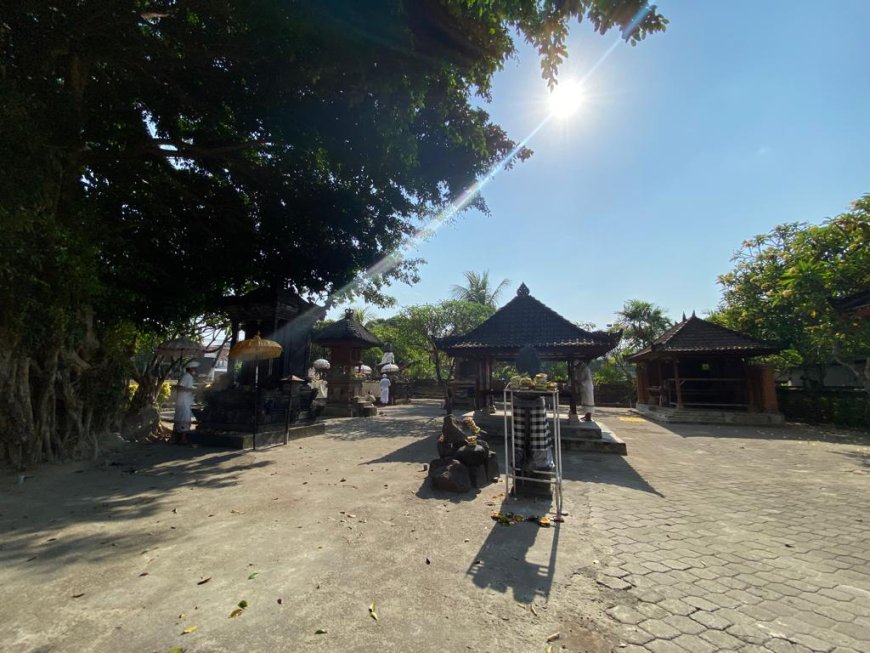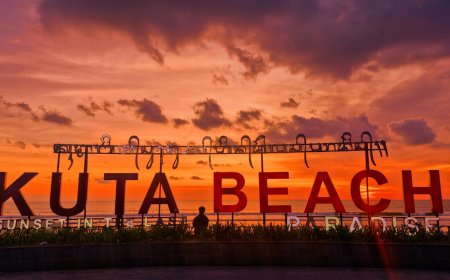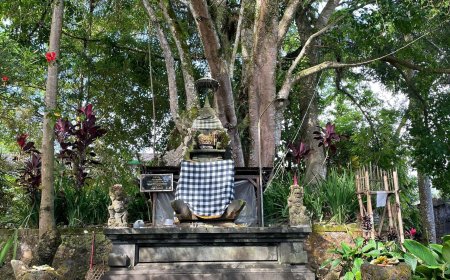Blanjong Temple and Blanjong Inscription: Evidence of the Victory of Sri Kesari Warmadewa
Bali with its thousand temples and rich history, will always be a diversity that makes this island special. One of them is Blanjong Temple. Located in the Sanur area, this temple holds an interesting history to discuss. With the existence of historical evidence in the form of the Blanjong Inscription, this shows that the existence of both is very important to preserve for future generations. Don't miss the opportunity to learn more about Blanjong Temple and the Blanjong Inscription.

Bali is an island that is very famous for its beauty, both in terms of nature, culture, and traditions. With all of its beauty, it makes Bali known by many people from all over the world. In addition, Bali is also known for the beauty of its many temples scattered throughout the island, hence the island is known as “the island of a thousand temples”. This is also due to the fact that the majority of the population in Bali are Hindus. With the many temples in Bali, there are many different histories behind them. One of them is Blanjong Temple.
Blanjong Temple is one of the Dang Kahyangan temples in Bali. Dang Kahyangan temples can be interpreted as a sacred place (temple) that was built on the basis of respect for Sang Maharsi who were grouped based on history and also as a place of worship during the kingdom era in Bali. The structure of Blanjong Temple consists of one courtyard (mandala), namely the main mandala. Blanjong Temple is located in the village of Sanur Kauh, Denpasar Selatan District, Denpasar City. This temple is very easy to find because it is located on the side of the road, precisely on Danau Poso Street, and is also adjacent to the homes of the residents around it.
Almost every temple in Bali has a history that is not only related to Hinduism in Bali, but also related to the general history of Bali. Like Blanjong Temple, which also has a history behind it. The name Blanjong from this temple comes from the word 'belahan' which means broken and 'ngenjung' which means fishing boat. Local residents believe that there was a broken Dutch ship that was stranded on the coast of Sanur, so the event was commemorated by building this Blanjong Temple.
Just like other temples, there are also several pelinggih in Blanjong Temple that have different functions. Based on the results of an interview with Made Sudiana, the caretaker of Blanjong Temple and the Blanjong Inscription, mentioned that there are several pelinggih. First, there is the Blanjong Inscription, which is one of the oldest inscriptions found in Bali. There is the pelinggih Sapta Patala, where there is the pelinggih Nandini and the Elephant statue. Then, in the middle, there is the pelinggih Jro Luh, where many Lingga Yoni artifacts from ancient times are stored. In the northeast corner of this temple, there is the pelinggih Lingga Yoni which is symbolized as Padmasana and a symbol of Siwa-Buddha worship. In this temple, there is no Padmasana because this temple was built before the influence of Dang Hyang Nirartha to Bali. More precisely in 913 AD, the teachings of Hinduism had not yet entered Bali, so there was no concept of Padmasana in the northeast corner of this temple, and was replaced by the pelinggih Lingga Yoni.

Pelinggih Lingga Yoni (Source : Personal Collection)
Other pelinggih in Blanjong Temple are located in the north, where there is a Gedong which is the pelinggih Gedong of Ida Batara Dalem Blanjong who resides in Blanjong Temple. Then, in front of the Gedong there is a Bale Penyimpanan, as a place to place the fabrics for the pelinggih found here. Next, there is the pelinggih Ratu Ida Batara Lingsir, but inside it there is an elephant statue, so this shrine is also often called the pelinggih Ida Batara Lantang Idung. And finally, there is the pelinggih Ida Ratu Tuan or sesuwunan when praying at this temple. Regarding the piodalan ceremony that occurs in this temple, it falls on Soma Pahing Wuku Langkir.
In addition to being a sacred place, Blanjong Temple is also one of the tourist destinations for tourists who are visiting the Sanur area. Its location close to Sanur Beach makes this temple a popular tourist destination for both weekdays and holidays. In addition, next to Blanjong Temple there is the Blanjong Inscription Cultural Heritage which is also an interesting tourist destination for tourists who want to explore Bali's rich cultural heritage. This cultural heritage was inaugurated on April 15, 2019 by the then Mayor of Denpasar, Ida Bagus Rai Dharmawijaya Mantra. Inside this cultural heritage there is one inscription, namely the Blanjong Inscription. Therefore, the Blanjong Inscription is designated as a Cultural Property.
The Blanjong Inscription is an authentic historical evidence of the early existence of the Balinese ancient kingdom. This inscription was dated to 835 Saka (913 AD) and was the first to mention the name of King Adipatih Sri Kesari Warmadewa, who was the founder of the Warmadewa dynasty in Bali. This inscription is a victory monument (Jaya Sthamba) that was erected by Sri Kesari Warmadewa to commemorate his victory over his enemies in Gurun and Swal. According to legend, the Dutch ship that ran aground on the coast of Sanur was a manifestation of the victory monument of Sri Kesari Warmadewa.

Blanjong Inscription (Source : Personal Collection)
The Blanjong Inscription is a cylindrical pillar with a height of 177 cm and a diameter of 62 cm. At the top of the pillar is a lotus flower crown. The inscription uses two languages and two scripts. The first side is written in the Nagari script using Old Balinese, and the other side is written in the Kawi script using Sanskrit. The inscription reads "In the year 835 Saka, not Phalguna, a king who has power in all corners of the world, who resides in the Sanghadwala palace, named Sri Kesari, has defeated his enemies in Gurun and in Swal. This is what must be known until later days". Due to the age of the inscription, it has undergone several restorations during its preservation. Finally, the inscription is kept and placed in a glass cabinet for safekeeping.
The designation of the Blanjong Inscription as a city-level Cultural Heritage Object by the Denpasar City Government shows the Denpasar City Government's concern for the preservation of cultural heritage objects in the city of Denpasar. The designation of this inscription as a cultural heritage is attached through Decision Letter Number 188.45/825/HK/2019 dated April 15, 2019. With this, the Blanjong Inscription becomes a benchmark of civilization that can strengthen all lines of development in both the city of Denpasar and Bali.
In conclusion, Blanjong Temple and the Blanjong Inscription are one of the relics that serve as historical evidence of the story of Sri Kesari Warmadewa's victory. Even though both of these things are well-preserved, Blanjong Temple and the Blanjong Inscription must still be maintained and preserved in order to be remembered and known by the general public over time. Therefore, Blanjong Temple and the Blanjong Inscription need to continue to be paid attention to and introduced more widely so that these two historical evidence can continue to exist and not be eroded by time.





























































